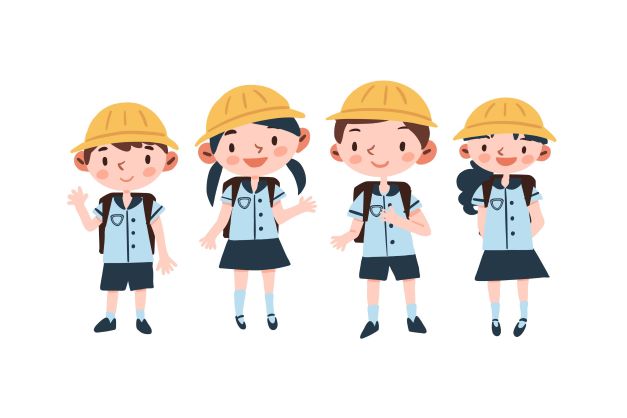How Japanese Children Celebrate
New Year
Japanese New Year, known as お正月 Oshougatsu, is celebrated from January 1st to January 4th. There are many traditional activities carried out to welcome the New Year, from cleaning the house to welcome the gods, decorating the house with New Year’s decorations, offering prayers, eating New Year’s food, and playing New Year’s games. Learn Japanese for kids by reading this article about Oshougatsu.
Decorating the House
Firstly, families clean up the house to welcome the New year before January 1st – a practice called Omisoka. Two decorations are typically found in Japanese households:
- Kagami-mochi
Translated as a rice cake mirror, kagami mochi is made up of two rice cakes stacked on top of each other. The ornament is usually placed on a family altar as an offering to the deities and removed on January 11th. On the last day of its placement, this ornament is broken during a practice called Kagami-biraki (Breaking the Mochi). - Kadomatsu
Kadomatsu is a plant decoration made of pine, three bamboo shoots, and plum. It is placed in a pair in front of homes from December 25th to January 7th. The ornament is used to welcome the New Year’s gods and ancestral spirits, a place for them to reside.
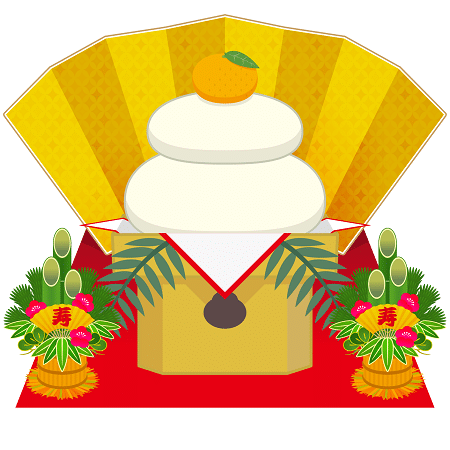
Hatsuhinode
Hatsuhinode is a tradition to view the First Sunrise on January 1st to symbolize the hope for good fortune for the New Year.
Hatsuyume
The first dream of the year is experienced on the night of January 1st (or the morning of January 2nd). Children put an image of Takarabune (Treasure Ship) under their pillows to chase bad dreams away. If the first dream of the New Year contains Mount Fuji, a hawk, or an eggplant, a good year is predicted ahead as those three items are all associated with good luck.
Hatsumoude
One of the Japanese New Year’s tradition is to visit a shrine to offer prayers to the gods. The New Year’s visit to the shrine is called 初詣 Hatsumoude. People will usually go during the first three days of January so the shrines are really packed with people during this time. During their visit to the shrine, people will usually offer donations in exchange omikuji, luck prediction of the year.
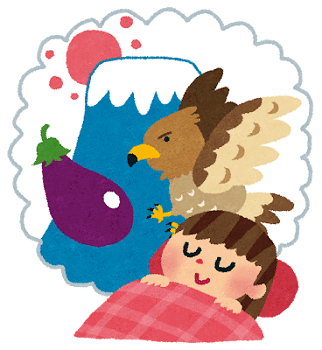
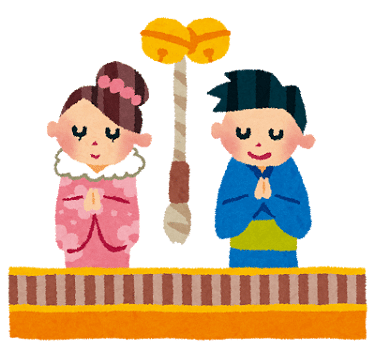
Osechi
Special food eaten during the New Year is called お節料理Osechi ryouri, or Osechi for short. There are many regional variations on what food is considered lucky and not lucky. Examples of osechi dishes are:
- ebi (prawn) to symbolize longevity
- kazunoko (herring roe) to symbolize fertility
- renkon (lotus roots) to symbolize a hope to see our future
- datemaki (sweet rolled omelette) to symbolize auspicious days
- kuromame (black beans) to symbolize a good year for work
- kobumaki (coiled seaweed) to symbolize happiness
- tazukuri (sardines) to symbolize abundance
Japanese people also eat mochi, sticky white dumplings during the beginning of January. It is often eaten as Ozouni, Japanese soup for the New Year.
On January 7th, there is a custom to eat Nanakusa-gayu (seven herb rice porridge) to chase all illnesses away and stay healthy throughout the year.
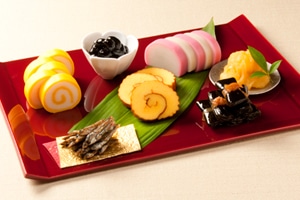
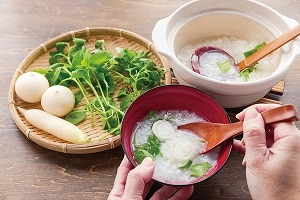
New Year’s Games
One traditional game played during this festive occasion is Takoage, a kite-flying game often played by boys. The kites are sold around mid-December and feature brightly colored kites of various shapes that symbolize good luck.
Girls often play Hanetsuki, a badminton like game. The game is played with decorative wooden paddles with a shuttlecock to chase away bad luck.
Another popular game is called Karuta, a card game where one player reads out poems, proverbs, or syllables, and other players need to quickly find the corresponding card.
These games are depicted in the New Year’s song Oshougatsu.

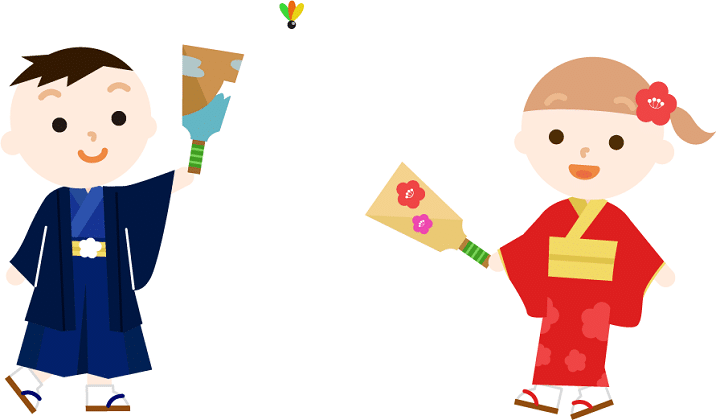
Otoshidama
A New Year’s tradition that brings excitement to the children is otoshidama. Children will get money placed in small, decorated envelopes called pochibukuro from adult relatives and family friends. The amount could range from ¥2000 to ¥5000, although more is not uncommon. Children can then use these gifts to buy something for themselves or save them.
明けましておめでとうございます。
Akemashite omedetou gozaimasu!

